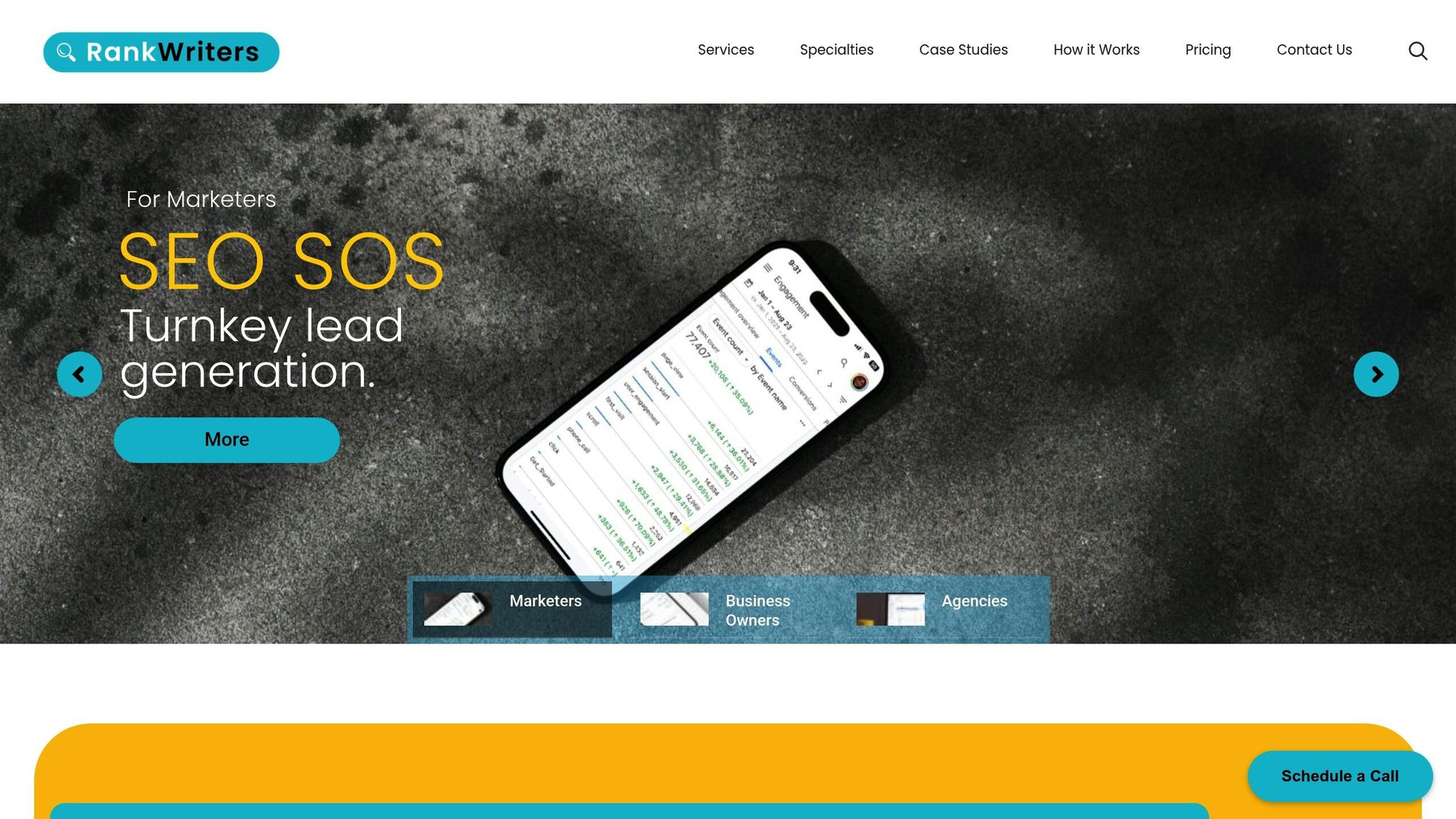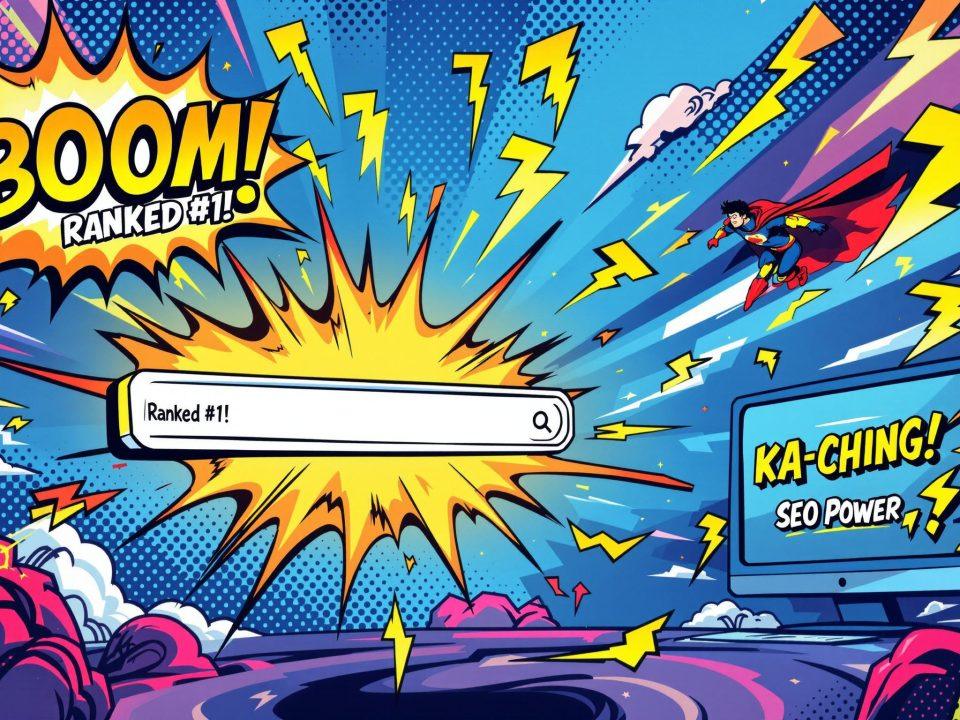Search intent is the reason behind every online query. If you’re a law firm, understanding this can help you connect with potential clients by creating content that answers their specific needs. Here’s a quick overview of the 5 steps to align your content with search intent:
-
Understand the 4 Types of Search Intent:
- Navigational: Users looking for specific pages (e.g., "Smith Law Firm contact").
- Informational: Users seeking guidance (e.g., "How to file a personal injury claim").
- Transactional: Users ready to hire (e.g., "Best car accident lawyer near me").
- Commercial Investigation: Users comparing options (e.g., "Top-rated injury lawyers").
- Analyze Top Search Results: Study what works for high-ranking pages, identify gaps, and improve content quality.
- Find Relevant Keywords: Use tools to discover keywords tied to client behavior, focusing on location, situation, and intent-specific phrases.
- Write Intent-Focused Content: Tailor content formats to match intent (e.g., FAQs for informational searches, testimonials for commercial intent).
- Track and Update Content: Monitor performance metrics like rankings and lead conversions, and refresh content to stay relevant.
Search Intent Explained: Boost Page Rankings and …
Step 1: The 4 Types of Search Intent
Step 1 is all about understanding how potential clients search for legal help. By recognizing the four main types of search intent, law firms can create content that directly addresses client needs. Let’s break them down.
Finding Specific Pages
This type of search, known as navigational intent, happens when someone knows exactly what they’re looking for. Examples include:
- A law firm’s name
- A specific attorney’s name
- Office locations
- Contact details
For instance, a user might search "Smith & Jones Law Firm Boston" or "Attorney Sarah Wilson contact." These searches show intent to find a specific page. Make sure these pages are easy to locate and optimized for quick access.
Looking for Information
Informational intent is when users are seeking answers or guidance. Common legal searches in this category include:
- How legal processes work
- Rights and responsibilities
- Time limits for filing cases
- Required documentation
For example, after a car accident, someone might search, "How long do I have to file an injury claim in California?" or "What documents do I need for a personal injury case?" Your content should deliver clear, accurate information to address these questions.
Ready to Hire
Transactional intent signals users who are ready to take the next step. These searches often include terms like:
- "hire"
- "near me"
- "consultation"
- "best"
- "top-rated"
Your content should make it simple for users to:
- Book a consultation
- Contact your office
- Submit case details
- Get directions to your firm
Comparing Options
Commercial investigation searches are about comparing legal services. These searches often focus on:
- Researching law firms
- Reading reviews and testimonials
- Exploring service offerings
- Evaluating expertise in specific practice areas
This is your chance to highlight what sets your firm apart. Use clear comparisons and compelling details to show why you’re the right choice. These efforts lay the groundwork for Step 2.
Step 2: Study Top Search Results
After determining search intent, take a closer look at the top-ranking pages to see what makes them perform well in search results.
Review Top Pages
Analyze the leading legal search results. Pay attention to their structure – like clear headings, short paragraphs, and key points that stand out. Also, note the types of content they use. For example, "lawyer near me" searches often feature location-focused pages, while post-accident queries may include detailed guides.
Key elements to look for include:
- FAQ sections that address common client questions
- Strong calls-to-action encouraging consultations
- Client testimonials and case outcomes
- Professional credentials or certifications
Once you’ve reviewed these pages, look for areas they might be missing or not covering well.
Find Missing Topics
Spot the gaps in content by identifying questions or details that aren’t fully addressed. These could include:
- State-specific statutes of limitations
- Local court procedures and requirements
- Regional insurance regulations
- County-specific filing steps
Filling these gaps can help set your content apart.
Check Page Quality
Examine the quality of these pages by focusing on a few key factors:
Content Depth: The best-ranking pages often provide detailed information on topics like:
- Steps to take immediately after an accident
- Necessary documentation
- What to expect in terms of timelines
- Details about the settlement process
User Experience: Legal content can be complex, so make it easy to navigate by ensuring:
- Clear, intuitive navigation
- Mobile-friendly design
- Quick loading times
- Scannable sections for easier reading
Trust Signals: Build confidence with elements like:
- Verified attorney credentials
- Memberships in professional associations
- Recent case outcomes
- Positive client reviews
Use these insights to refine and improve your own content, ensuring it meets high standards and fills content gaps effectively.
Step 3: Find Relevant Keywords
To connect with the right audience, focus on identifying keywords that align with your potential clients’ search intent.
Keyword Research Tools
Leverage keyword research tools to discover terms that reflect client behavior. Prioritize tools that provide insights into search volume and intent for legal-related queries. Key areas to analyze include:
- Search volume trends: Spot seasonal shifts in legal-related searches.
- Related queries: Understand how potential clients phrase their concerns.
- Geographic data: Pinpoint location-specific search habits.
- Competition levels: Identify less competitive opportunities for targeted content.
Organize Keywords by Intent
Sort keywords based on the decision-making stage of your audience. This ensures your content aligns with their needs at every step:
| Intent Type | Example Keywords | Content Focus |
|---|---|---|
| Informational | "what to do after car accident" | Guides and checklists |
| Navigational | "injury lawyer near me" | Localized service pages |
| Commercial | "best personal injury attorney" | Case results and client testimonials |
| Transactional | "schedule free consultation" | Contact forms and call-to-action pages |
Using this structure helps refine your content strategy for better engagement.
Focus on Specific Phrases
Target long-tail keywords that show clear intent and lead to higher conversions. Examples include:
- Location-specific terms: "Manhattan workplace injury attorney"
- Situation-specific phrases: "compensation for rear-end collision"
- Timeline-related queries: "how long to file accident claim in [state]"
- Outcome-focused terms: "maximum settlement for truck accident"
Each piece of content should address a specific client concern, making your strategy more effective in meeting their needs.
Step 4: Write Intent-Focused Content
Choose the Right Format
Your content’s format should match what potential clients are looking for. Different search intents require tailored structures:
| Intent Type | Best Content Format | Key Elements |
|---|---|---|
| Informational | How-to guides, FAQs | Step-by-step instructions, expert insights |
| Navigational | Service pages, About Us | Clear CTAs, contact information |
| Commercial | Case studies, testimonials | Results, success metrics |
| Transactional | Consultation pages | Forms, phone numbers, scheduling tools |
Address Client Challenges
Focus on solving the specific problems your potential clients face. Offer straightforward, actionable solutions that demonstrate your expertise in personal injury and accident law:
- Start with the solution by sharing key information upfront.
- Use real-life examples to illustrate scenarios clients can relate to.
- Provide clear, actionable steps to guide readers on what to do next.
- Anticipate concerns and answer common questions directly.
Make Content Easy to Read
The first three Google results get 75.1% of clicks [1]. To compete, your content must be easy to consume:
- Use clear, descriptive headers.
- Keep paragraphs short – 2 to 3 sentences max.
- Highlight key points with bold text.
- Include plenty of white space for readability.
"Great content doesn’t just inform – it persuades." – RankWriters [1]
Break down legal jargon into simple, professional language. Organize your content with pillars to create a logical flow that helps both readers and search engines understand your topics. Finally, use performance data to refine and improve your content over time.
Step 5: Track and Update Content
Monitor Key Metrics
Keep an eye on key performance indicators (KPIs) to ensure your content aligns with client search intent. Focus on these metrics:
| Metric Category | Key Indicators | Insights Provided |
|---|---|---|
| Search Performance | Keyword growth, rankings | Measures how visible your content is online |
| Lead Generation | Phone calls, form submissions | Shows how well your content converts leads |
Use Insights to Adjust
Dive into your analytics to identify which keywords and lead channels are performing best. Use this data to fine-tune your content strategy and improve calls-to-action (CTAs). Regular adjustments based on these insights will help your content stay competitive.
Keep Content Updated
Make it a habit to refresh your content regularly. This ensures it reflects any legal updates or shifts in client behavior, keeping it useful and relevant.
Conclusion: Match Content to Clients
Why Aligning Content with Intent Works
When your content aligns with what potential clients are searching for, the results speak for themselves. For law firms, this means connecting with injury and accident victims who are already looking for help. By creating content that meets their needs, you attract qualified leads through organic search. Studies show that appearing in top search results not only boosts visibility but also drives more leads.
Content optimized for search intent turns your blog into a round-the-clock lead generator. By addressing specific client concerns and questions, you establish authority and guide potential clients through their decision-making process.
RankWriters takes this approach to the next level, ensuring your content strategy is even more effective.
How RankWriters Enhances Your Strategy

RankWriters specializes in crafting content strategies designed to align with client search intent. Using in-depth keyword research, competitor analysis, and intent-focused content creation, we help law firms create content that not only ranks but also converts.
Here’s what we offer:
| Strategy Component | What It Does for You |
|---|---|
| Content Pillar Development | Covers all critical practice areas thoroughly |
| Intent-Based Optimization | Ensures content addresses client questions and needs |
| Performance Tracking | Monitors results through calls, form submissions, and rankings |







